[00:00:00] Mark Tomlinson: Now, the next thing you heard me mention when I was talking about the basic physical resources was a thing called data states. And if you want right now, you can go see there's some there's a blog entry I did called the Big Yellow Bus, which is kind of a fun metaphor, but it's also an understanding of these core data states, which I say, again, are really at at heart. [00:00:21][21.2]
[00:00:21] There's three main states that data can be in. One is that it's sitting still, it's being stored data storage. There's data manipulation or transformation that's being done by the processor. So processing instructions, that's manipulating or changing the data. And then there's data movement, which I also sort of say is data display or moving that data into a visual engine. [00:00:44][23.1]
[00:00:45] So it's rendered again and so that you can display it. But the core things are storing data. And so when you're looking at storage like a disk or a tape for a very, very long time or temporary storage, which is sitting in a buffer, sitting in memory, and those are the physical resources that would happen. So for data storage, you're looking at disk capacity, you're looking at tapes, USB storage or temporary storage and memory percent used or cache. [00:01:11][26.4]
[00:01:12] That's the idea of like, why do I need to learn CPU disk, memory network? Why is it important to to monitor? Because I need to measure how much usage of the resources is happening in data storage sitting at rest. Data manipulation, this is where we look at instructions process per second(IPS), input/output busses on the processor. So the processor percent used system time, user time, etcetera is manipulated where data is being changed somehow and the processor needs to actually process and make that happen. [00:01:47][34.9]
[00:01:48] The other thing then about data movement is where we might measure bytes in and out of the bus, network disk, memory bytes per second, etc. and data display. So if I go back to some of my monitoring tools here, I go to the activity monitor. We can see I've get Quicktime is actually recording this entire session in the background. So you can see the CPU here is about 19 percent used. So that's going to be data manipulation. And Quicktime player is chewing a lot of data to record this screen session into a file. And I've been recording now for about 16 minutes. [00:02:23][34.7]
[00:02:24] You can see it's been running and then it's using about three, fourteen threads. It's been it's got its PID, et cetera. So you can look at Quicktime player is, has a lot of data that's being crunched, but what else is it doing in short term storage? So again, if we go look for quick time player, a scroll down here, it's going to be here somewhere. There it is. Look, it's already so I've got 72 megabytes in sort of memory that's sort of sitting in memory, stored in memory. It might be changing, but it's very short term memory. Right. And it might have some compressed memory as well. So about five meg. And again, we're using fourteen threads in order to manage about 72 meg worth of memory for the Quicktime player, which is doing the recording right now. So I've taken care of data that's being stored. [00:03:16][52.9]
[00:03:17] But what's interesting here is this thing is actually right. Must be recording the screen and writing to a file. So if I go to the disk and I look at maybe bytes written, what's at the top here and see if I can find those, go scroll by name. So this is interesting. I've got 72 meg that is in there and let's go. Where's Quicktime, when I go past it? Here we go. Come on, Google. I know my alphabet. Here we go. Quicktime. Quicktime player, aha! So we have 72 meg that was in memory and in disk. We look at this, this is running forty nine meg bytes written three hundred forty nine point three meg, three hundred and fifty one point six meg. And it's continuing to go up, which means that as we're recording everything on the screen, that number should be going up and up and up and up slowly because, wow, what are we doing? [00:04:13][55.7]
[00:04:13] We're taking it out of short term memory storage and that data is being put on disk for long term memory. Right. And that makes sense for for an application that's recording the screen session. Now, the Quicktime player is not connected to the network, so we should see in Quicktime, we saw it there just for a second that this Quicktime should probably have zero. I think it did show zero. There we go. Zero bytes and zero bytes. So the Quicktime player is not actually recording in the database, recording anything on the network. Excuse me. [00:04:43][29.6]
[00:04:44] So the interesting thing here is that take one process and a process is a logical thing. It's got threads associated with it. If we look at the CPU that was, hang on I lost you there. Come on. OK. Come on, Quicktime player, 14 threads, 18 percent CPU and memory, 73 meg and again, 14 threads, disk-wise, we're still writing we're up to 388meg so far and no bytes on the network for our little Quicktime player. And that's just a good example of of how this stuff can get how you can track for one process. What are the four core resources that it's going to run? [00:04:44][0.0]

Comments are closed.